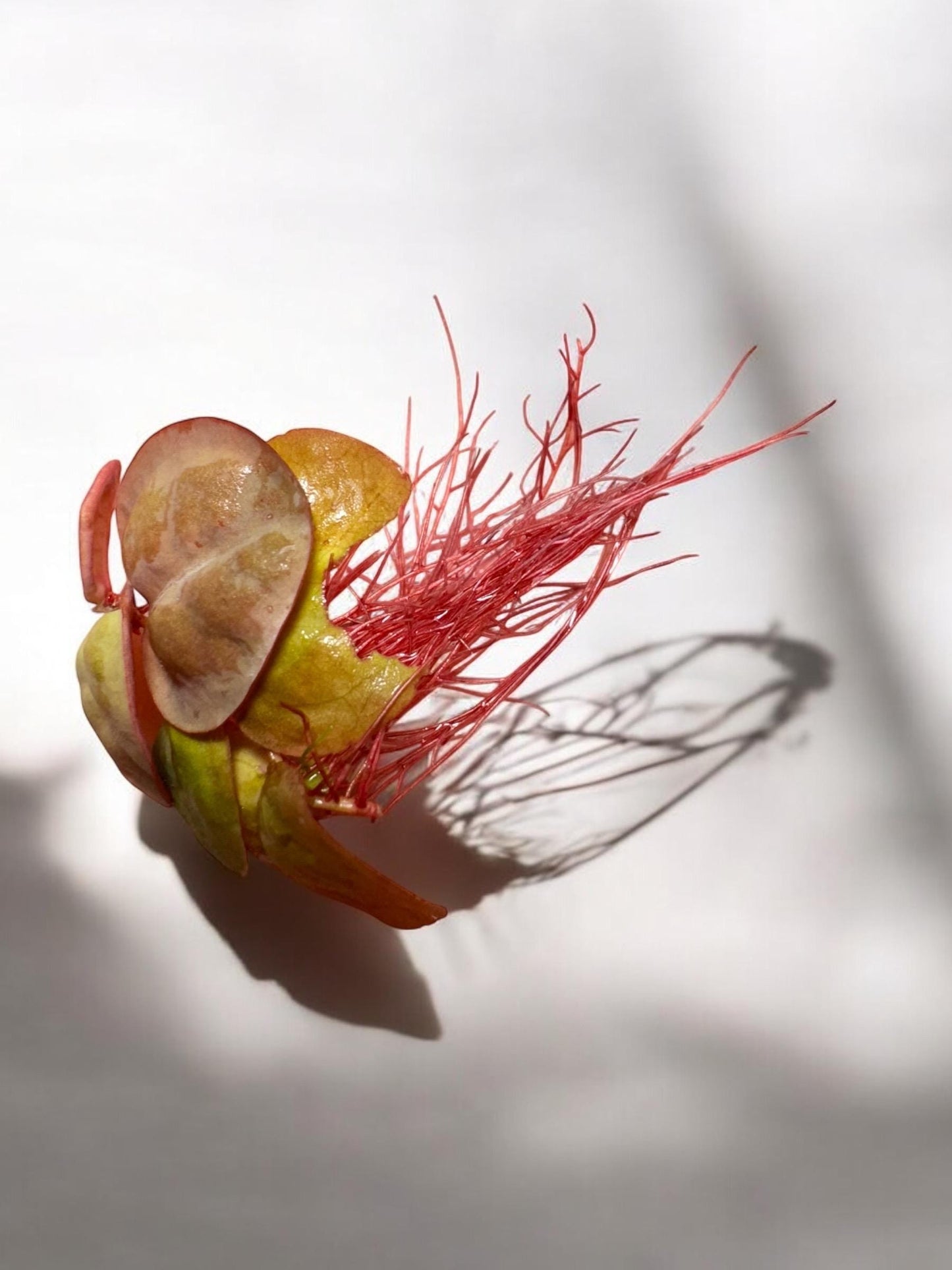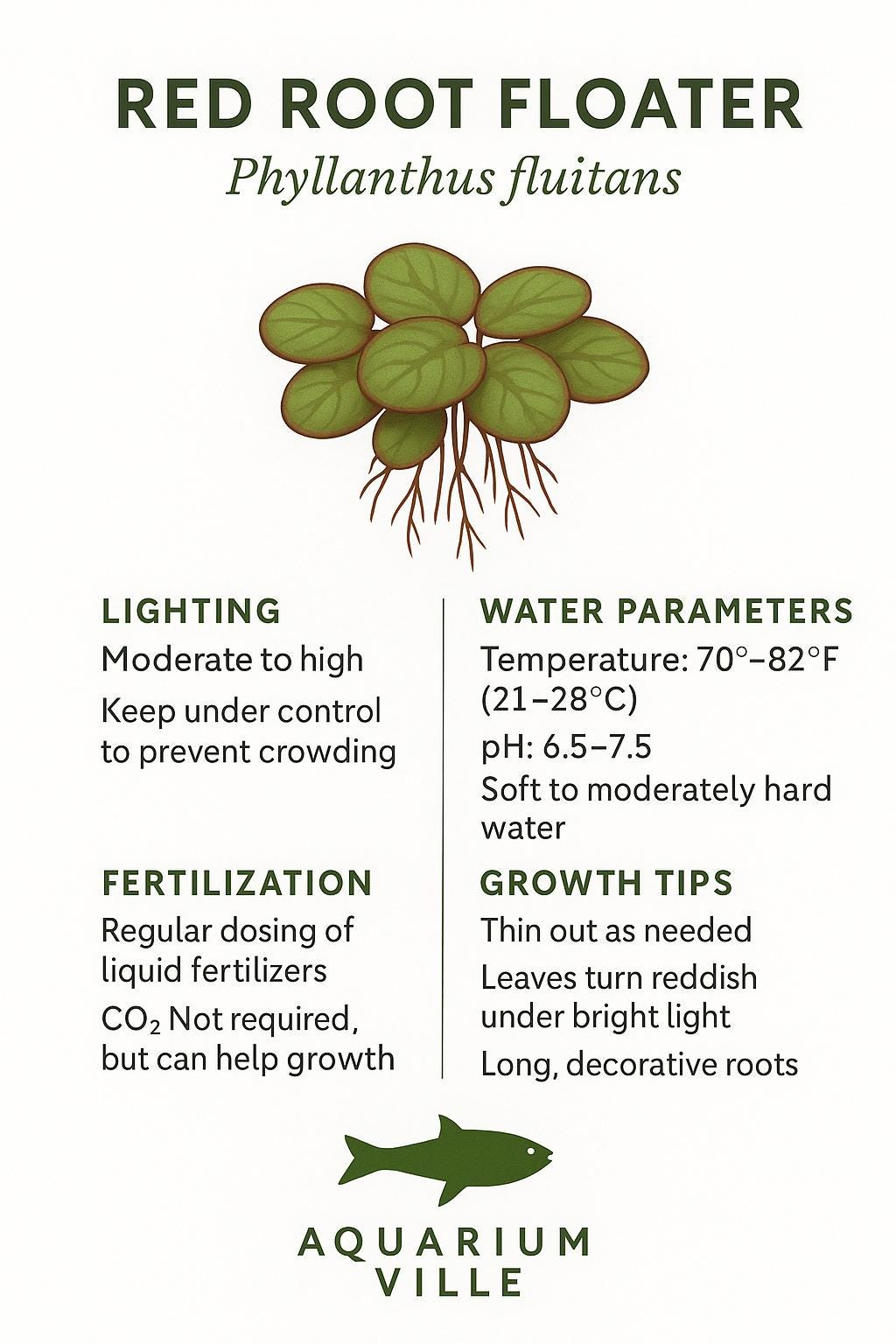AquariumVille
Frogbit Plants +Red Root Floater Plants Aquarium Floating Plants, Live Aquarium Plant
Frogbit Plants +Red Root Floater Plants Aquarium Floating Plants, Live Aquarium Plant
Couldn't load pickup availability
Frogbit (Limnobium laevigatum): Description and Care Guide
Description
Frogbit is a floating aquatic plant commonly used in freshwater aquariums and outdoor ponds. Native to Central and South America, it is a fast-growing species belonging to the Hydrocharitaceae family. It features small, rounded, heart-shaped leaves with a bright green hue and smooth surface, making it visually appealing. Frogbit floats on the water’s surface, with its long, feathery roots trailing below, providing shelter for aquatic life and helping to absorb excess nutrients, reducing algae growth.
Frogbit is often compared to duckweed but is larger and easier to manage. Its trailing roots make it a favorite for aquascaping and creating a natural, jungle-like appearance.
Care Guide
1. Lighting
• Moderate to High Light: Frogbit thrives under moderate to high light conditions. Insufficient light may cause yellowing or stunted growth.
• Avoid Direct Sunlight (for indoor setups): Too much direct sunlight can overheat the water or cause leaf burn.
2. Water Parameters
• Temperature: 68–86°F (20–30°C)
• pH: 6.0–7.5
• Hardness: Soft to moderately hard water (2–12 dGH)
• Frogbit prefers clean water with good circulation but should be shielded from strong currents that can disturb its roots.
3. Nutrients
• Frogbit benefits from a nutrient-rich environment. If grown in aquariums, ensure adequate nitrogen, phosphorus, and potassium levels.
• Supplement with liquid fertilizers if the plant shows signs of nutrient deficiency, such as yellowing leaves.
4. Pruning
• Regularly thin out frogbit to prevent overcrowding, as it can quickly multiply and block light for other plants in the tank.
• Remove any dead or decaying leaves to maintain water quality.
5. Placement and Compatibility
• Ideal for aquariums, paludariums, and ponds.
• Compatible with most fish and invertebrates, including shrimp and bettas, as it provides hiding spots and shade.
• Avoid using frogbit with species that tend to uproot plants, like goldfish or large cichlids.
6. Maintenance Tips
• Prevent frogbit from covering the entire water surface to allow sufficient gas exchange for fish and other aquatic life.
• Check for pests like snails or aphids, which can sometimes infest the plant.
By providing the right environment and regular care, frogbit can be a beautiful and functional addition to your aquatic setup, offering aesthetic appeal and ecological benefits.
Share




Definitely a go-to shop for me for plants. Plants are packed well, nice size, good roots, and have done well in my tanks. Quick shipping is another plus!
Quick shipping, everything arrived in great condition, & received more than expected! Would purchase from this shop again! Definitely recommend!





